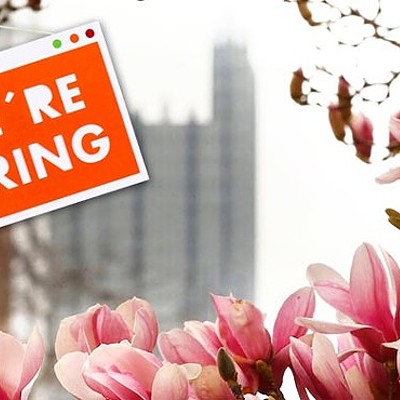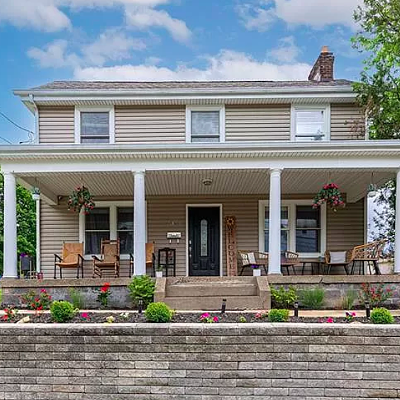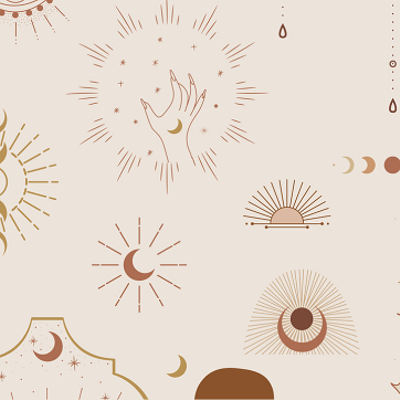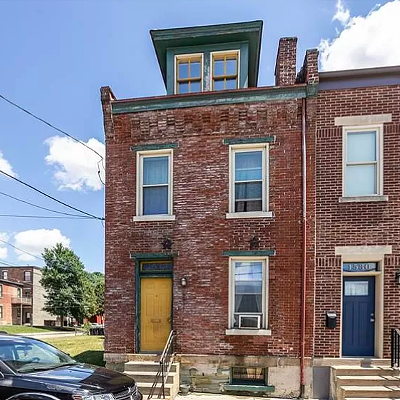You are not the first to have a vision of the Virgin Mary on that spot, though in its long history of religious visionaries, you may be among the few to identify a two-foot-tall statue from across a six-lane highway.
Readers with inferior vision can see the site for themselves by following these directions (assuming they can read them): Drive up Bates Street from Second Avenue, turn right onto the Boulevard of the Allies, and take a right onto Ward Street. Follow Ward to the end, and turn right onto Wakefield. You'll soon see a wooden walkway in front of a handful of homes on the right. Follow it to the chain-link gate and walk inside. (Lazy readers can rent Rick Sebak's documentary Something About Oakland.)
What you'll see is a homemade shrine to the Virgin Mary, her statue mounted on a pedestal with an inscription at the base dating the shrine to Nov. 22, 1956. The statue is bedecked in flowers and surrounded with candles. Nearby is a humble wooden altar before a crucifix ensconced in yellow brick. There's a manger scene nearby, and a wooden structure devoted to an obscure Polish saint, Faustina. Along the stone wall behind the garden are the 14 Stations of the Cross, simple wooden crosses decorated with nameplates bearing terse descriptions of each step of Christ's journey up the hill to Calvary. ("Mother's arms," and "Simon helps" are two examples.)
"We don't even know who put those crosses up," says Sophie Koss, an Oakland resident who tends the site with other volunteers. Koss and about 10 others also do homage to the shrine by saying the rosary there at 7 p.m. on the 22nd of each month. Occasional masses are performed as well, though the site is not officially sanctioned by the Catholic Church.
Neither are the reports of miracles, though the stories persist. A 1998 Pittsburgh Post-Gazette account listed a handful of unusual occurrences at the shrine, including a spring that appeared in the rock wall when the plants needed water -- "like the rock that quenched the Israelites in the desert," as the P-G put it. Koss says that sometimes the sick or infirm find they "feel better from just visiting the shrine. Some say the water helps them. I always feel if anything bothers you, that's the place to go."
Even the shrine's origins are shrouded in mystery. Barringer Fifield's guide to the city, Seeing Pittsburgh, contends that the shrine was built "on the spot where a steelworker on his lunch break had a vision" of Mary. (That's how regimented life was in the days of Big Steel: You experienced miracles on your own time.) But Koss and most others credit the shrine to a neighborhood woman named Sophie Toma, who apparently hoped the Virgin Mary would watch over the Parkway and intercede on behalf of accident-prone commuters.
Someday, though, Catholics may be cursing highway commuters: If the long-delayed Mon-Fayette Expressway is ever built, an interchange connecting the toll road with Bates Street might require the shrine's removal. Engineers have identified nearby alternate locations for the shrine, but turnpike spokesman Joe Agnello admits, "It's tough to move a holy spot.
"It almost seems, you know, like you're not quite sure what you're messing with," adds Agnello, who identifies himself as "a fairly recent convert" to Catholicism. The site lies partly on public land, he says, but "it seems it was built without asking. If they had asked, they probably wouldn't have been able to do it. But what can you do?"
Koss professes not to be too fearful for the shrine's future: "We pray about it, but we can't worry about it." The project is awaiting federal government approval -- Agnello expects a decision by this fall -- and the commission might find ways to work around the current site anyway. Plus, Koss notes, the Expressway is currently short of anticipated funding: "Maybe the Blessed Mother is helping us." That would explain all the delays, certainly.
The shrine, Koss says, is "never locked, and it's open to non-Catholics too. ...You feel in this busy Oakland that it's a peaceful place to go. There's traffic, but it doesn't bother us. We just fade it all out."










